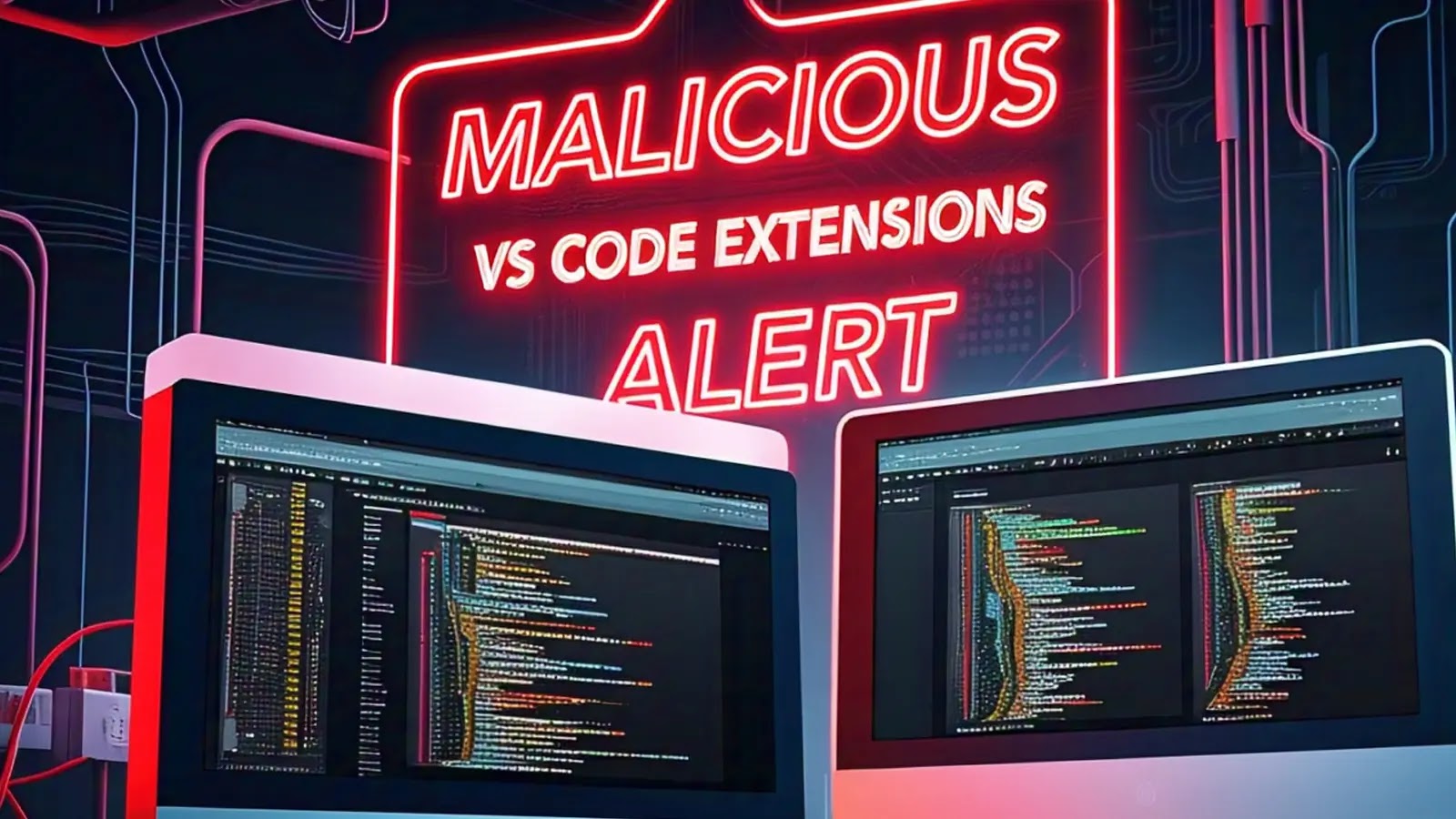.png
)
.webp)
Introduction
Cybersecurity experts have recently exposed a worrisome trend where millions of software developers are being targeted through deceptive Visual Studio Code extensions. These extensions, disguised as helpful productivity tools, secretly execute malicious code as developers engage in their software projects.
Understanding the Deceptive Functionality
Although these extensions offer useful features and appear to operate normally, their main objective is clandestine, making them exceptionally dangerous. They skillfully hide their harmful intents beneath the guise of functionality, leveraging the trust placed in one of the tech industry’s most revered development environments.
Who’s at Risk?
The primary victims of this stealthy malware campaign are developers who use JavaScript and Python. These extensions lure developers with promises of streamlining tasks like code formatting, snippets generation, and automation functions:
- Access to local files which could lead to the extraction of sensitive data such as source code and API keys.
- Potential backdoors could be created inadvertently in software products during the development phase.
Analyst Insights on the Complexity of Attacks
Experts, including ExtensionTotal analyst Yuval Ronen, have pointed out the sophisticated nature of this attack, suggesting it’s the work of organized crime syndicates rather than independent hackers. “These extensions are engineered not just to steal credentials but to ensure longevity within the host systems and potentially introduce exploitable vulnerabilities unnoticed,” Ronen explains.
Exploiting VS Code’s Extensive Ecosystem
VS Code’s extensive extension ecosystem, though a significant advantage for user customization, poses challenging security risks. With thousands of community-created tools, Microsoft faces difficulties in enforcing stringent security measures effectively. Many extensions were initially introduced into the marketplace with benign code, which later received malicious functionalities via updates.
Diving Deeper: The Infection Techniques
The malware employs a sophisticated, multistage infection mechanism, making detection remarkably difficult:
- Initial stage involves loading legitimate functionality and simultaneously downloading an encrypted payload disguised as benign configuration data.
- The encrypted payload is decrypted and executed stealthily using JavaScript’s
eval()function, bypassing traditional static code analysis tools.
These advanced techniques demonstrate the high level of evasiveness and adaptability of the malware, enabling it to bypass debugging environments and security tools effectively.
Stay Alert: Protect Your Development Environment
For developers and security teams, staying vigilant and informed about these risks is paramount. Regular updates, vetting extensions thoroughly, and monitoring unusual behaviors in development environments are crucial steps to guard against these sophisticated threats.
Related: Unlock the Future of Cybersecurity: OpenSSL 3.5.0 Introduces Cutting-Edge Post-Quantum
Last Updated: April 8, 2025




